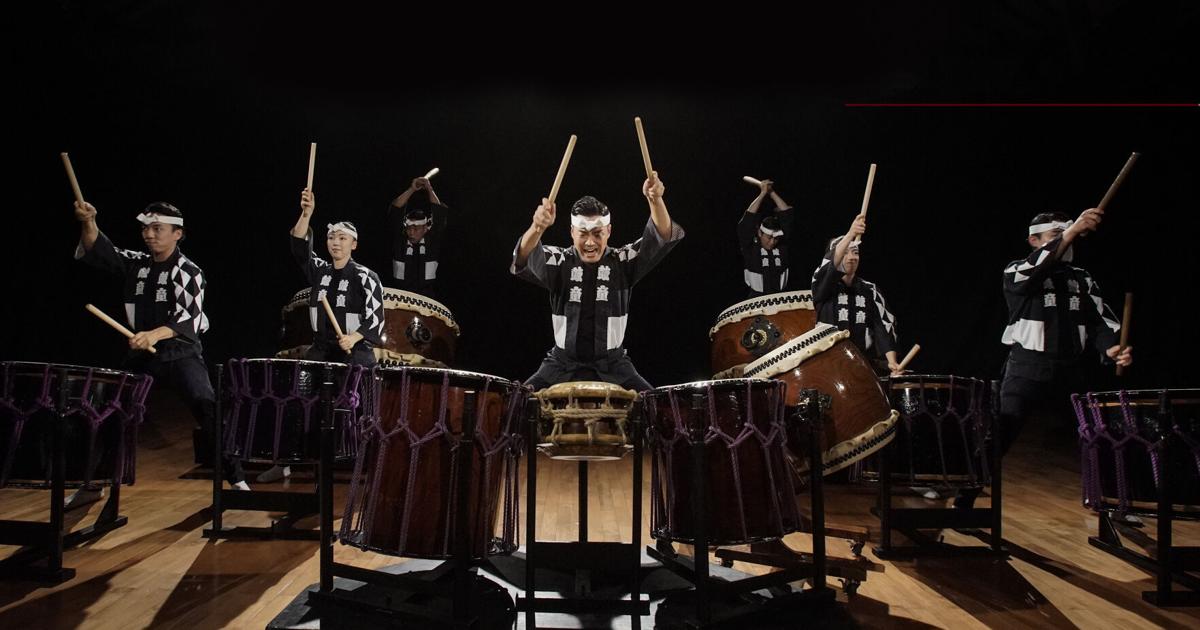Many theories exist to explain the popularity of Japanese taiko drumming.
Moe Niiyama, a member of Kodo, a professional taiko drumming troupe from Japan, ascribes to one in particular.
“It’s said the sound of the big taiko drum is similar to the heartbeat a baby listens to in its mother’s womb,” she said. “Even though it’s a Japanese instrument, it can be shared with anybody.”
Kodo will bring its “One Earth Tour 2025: Warabe” to Pikes Peak Center on Sunday.
That theory embraced by Niiyama seems to correlate with the group’s name. The word kodo consists of two Japanese characters, the first of which, tsuzumi, means drum. The second, warabe, means children or people. Together the two characters translate to children of the drum.
Four years ago, the troupe celebrated its 40th anniversary and created two separate productions, one using the first character and one using the second. The current tour is based on the second and is focused on the expressions of each player and the group as an ensemble.
Niiyama has spent almost her whole life playing taiko, beginning at age 3 as part of her kindergarten curriculum. She played in a community group through high school before auditioning to become an apprentice with the troupe in 2017. After two years in the apprentice program, where players also learn about farming and Japanese culture, she was selected to become a junior member for a year, and then an official member one year later in 2020.
Performances feature her on taiko drums, tategoto (vertical harp) and bamboo flutes. She also does vocals. And in this tour she has a starring role as a soloist performing a lion dance in an elaborate costume.
“The most that stuck to my heart is the power of taiko and what the sound can do or make people feel,” she said. “We travel the world, and though we speak a different language, taiko drum allows us to communicate non-verbally.”
Taiko, which began 400 years ago, spread throughout Japan in different forms and song formats. Kodo performs original and traditional songs, the latter of which members of the troupe learn from locals to ensure the folk art stays alive.
“There is a lot to learn from learning the history and folk art form,” Niiyama said. “And that’s because traditional art forms, or folk art forms, have been passed down generation to generation and keep changing as we evolve as humans. What I can do to keep this living is to pass down to these generations as well.”
Alisa Banks explores her Louisiana Creole heritage, African diaspora in new Colorado Springs exhibit
This kind of musicality clearly requires a certain level of physical aptitude, but Niiyama says another type of strength is even more crucial.
“Our performances are two hours. We need physical and mental strength to keep us going,” she said. “Those strengths are built and grown through two years of apprenticeship. It’s up to each performer to maintain the physicality and ability to power through the two-hour performance. More than physical, the mental aspect is important. We need to remind ourselves we’re capable of pulling it off. Mental strength is more important than physical strength.”
Contact the writer: 636-0270
